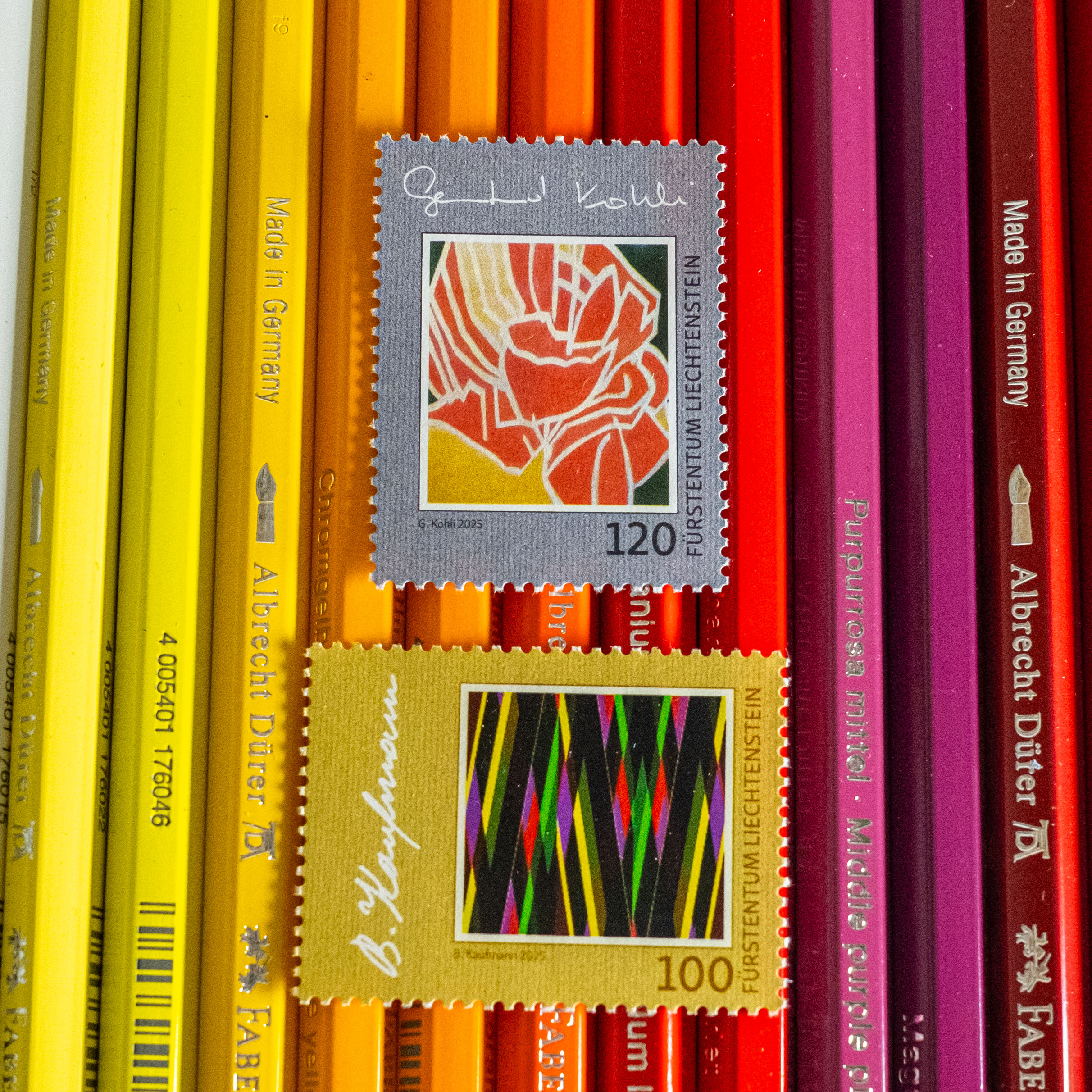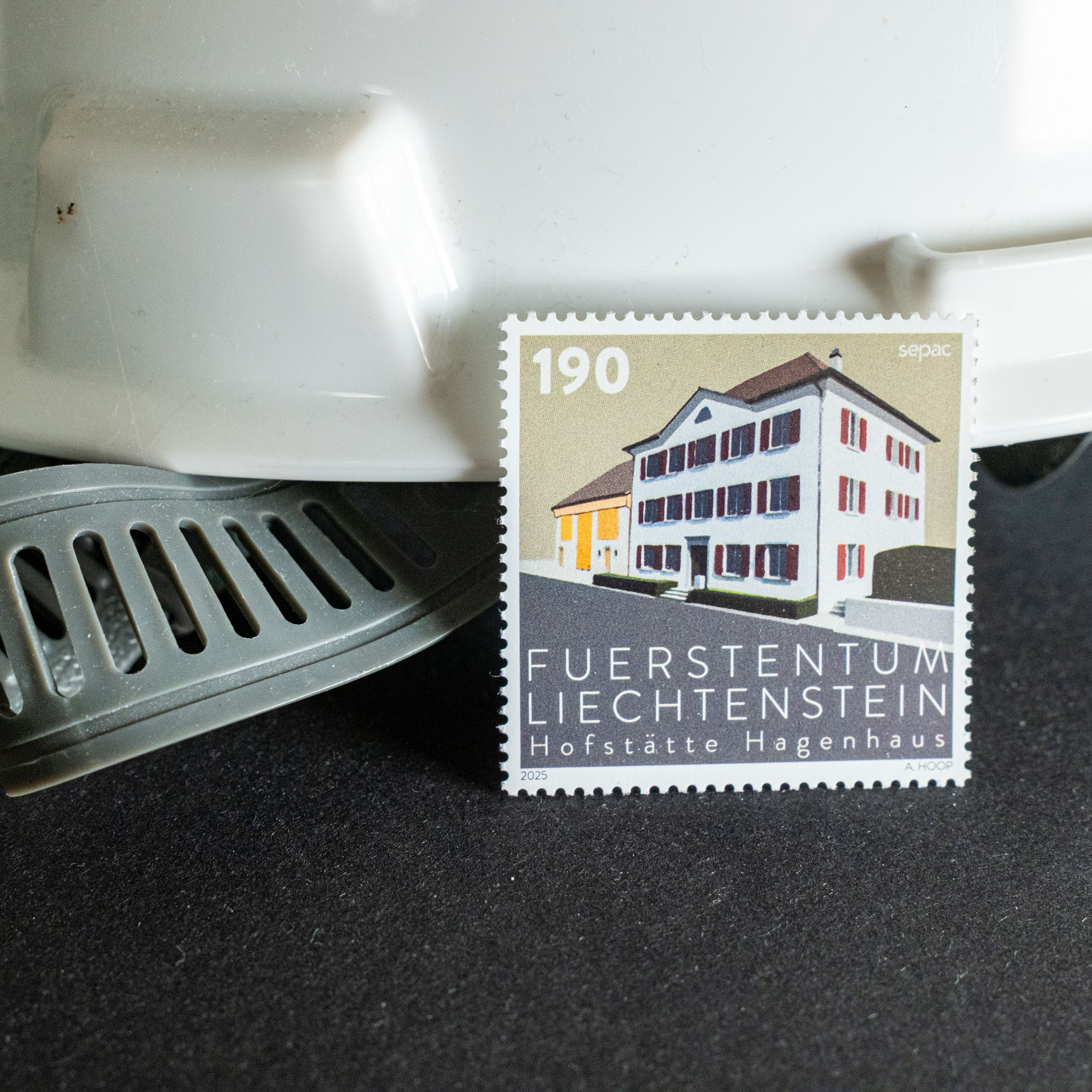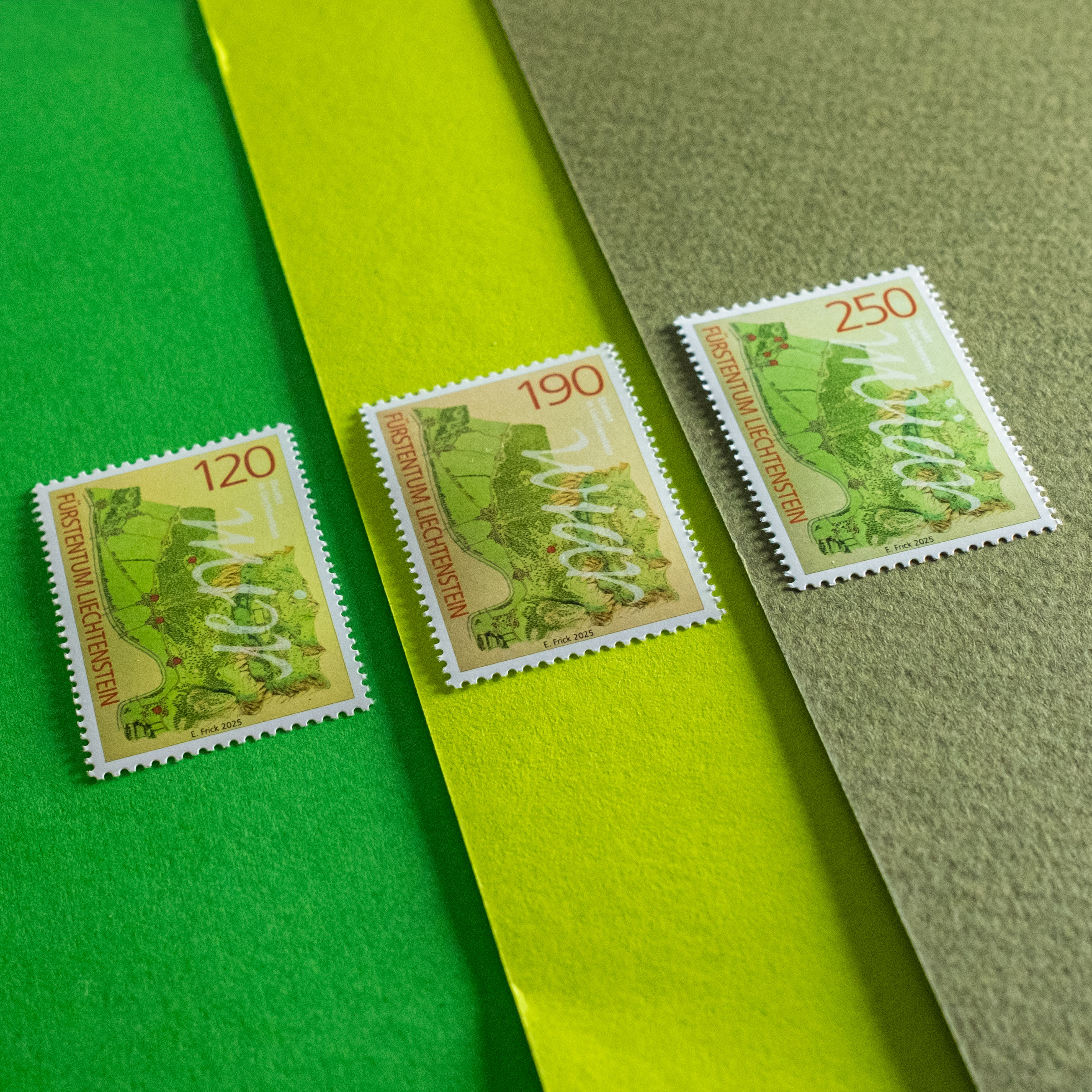NEWS
2nd stamp issue
2 June 2025
Fine Arts from Liechtenstein
As part of our “Fine Arts from Liechtenstein” series, we are once again putting the spotlight on two artists and their life's work this year. The special stamps show paintings by “Bruno Kaufmann” (face value CHF 1.00) and “Gertrud Kohli” (face value CHF 1.20).
Bruno Kaufmann's (*1944) work “Diaphan A4” was created using the Diaphan technique as a digital print on can-vas. At the heart of his work is a creative approach based on rational form and color combinations and the playful exploration of new intermediary colors.
For the artist, the computer is the ideal tool for developing ideas and advance into spheres unknown to him.
Gertrud Kohli's (*1945) work “Rose” was created in 1994 as an acrylic painting (125 x 110 x 3 cm) on wood.
The rose sets a double accent: it blossoms for humans as an existential experience, glowing and with an enchanting fragrance in the garden of life, but also as a symbol of life, even with thorns. At the same time, it is a woody plant, an ornament on the apple tree and produces a fruit. The “Rose” thus becomes the translation between nature and the viewer.
200 years of the First Public Rail Journey
The history of public rail travel began in 1825 between the towns of Stockton and Darlington in England: on Sep-tember 27, 1825, a steam locomotive with 36 attached carriages and a maximum speed of 24 km/h traveled through the English countryside for the first time.
In addition to the many spectators along the route, almost 600 passengers did not miss this event. However, it was not necessarily comfortable - some of the passengers were sitting or standing on the wagons loaded with coal.
The 39-kilometre journey marked the beginning of modern rail transport and revolutionized travel and trade. The stamps “Outward journey at sunrise” (face value CHF 1.90) and “Return journey at sunset” (face value CHF 2.50) commemorate this historic event.
Liechtenstein has had a single, almost nine-kilometre-long railroad line running through the Principality since 1872. It is part of the connection from Feldkirch (Austria) via Schaan (Liechtenstein) to Buchs (Switzerland) and is operated jointly by the three countries.
SEPAC – Architecture: Hagenhaus
The Hagenhaus is a 19th century farmstead located in the Liechtenstein hamlet of Nendeln. The building complex has been a listed building since 1988 and is probably the best-preserved farmstead in Liechtenstein from the first half of the 19th century.
Where it now stands prominently on one of the busiest roads in the Principality, the Hagenhaus was part of the historic Lindau - Milan postal route in the 19th century.
The Hagenhaus was built in 1837 by the Vaduz master builder Joseph Anton Seger and was used by two families as a combined residential and commercial building with adjoining agricultural outbuildings. From 1864 it housed the first K&K post office in the Liechtenstein Unterland. The owner was Josef Alois Schlegel, who also acted as postmaster himself. The post office existed until 1912.
Our special stamp “K&K Post Office 1864-1912” (face value CHF 1.90) is Liechtenstein's contribution to this year's SEPAC issue. Every year, the association of the twelve smallest postal organizations in Europe issues a stamp on a common theme; in 2025, the theme is “Architecture”.
Dialect in Liechtenstein
“Liechtensteinisch” is a collective term for the High Alemannic dialects spoken in the Principality of Liechtenstein in the Oberland and Unterland and the Highest Alemannic Triesenberg dialect.
The dialects in Liechtenstein belong to the Alemannic dialects of Vorarlberg (Austria) and south-western Germany. Due to the dialect continuum, there are sometimes considerable regional differences and variations within the Liechtenstein dialect.
For example, the term “wir” (German for “we”) is pronounced “miar” in the Oberland, “wiar” in Triesenberg and “müar” in the Unterland.
Our special stamps “Oberland” (face value CHF 1.20), “Triesenberg” (face value CHF 1.90) and “Unterland” (face value CHF 2.50) emphasize the linguistic regionality of the small state of Liechtenstein. The villages where the dia-lect is spoken are marked with red dots on the historical map.
Panorama Fürstensteig
Probably the most famous hiking trail in Liechtenstein (difficulty level T3) through the north-west face of the “Alp-spitz” (1942 m above sea level) was financed by Prince Johann II and opened in 1898.
The path, which is partly carved into the rock, requires sure-footedness but rewards you with breathtaking views. A torchlight procession along the “Fürstensteig” takes place every year on Liechtenstein's national holiday.
The “Kuhgrat”, the highest point of this varied mountain hike, rewards you with a spectacular view of the “Rätik-on” and the majestic mountains of Switzerland and Vorarlberg (Austria). The view down to the picturesque Rhine villages as far as Lake Constance is unforgettable, while the colorful scree flora along the way provides additional fascination.
Our se-tenant panorama stamps show the Fürstensteig with the motifs “Sunset” and “Torchlight procession” on the left and the motifs “Sea of fog” and “Sea of lights” on the right (face value CHF 1.90 each).





